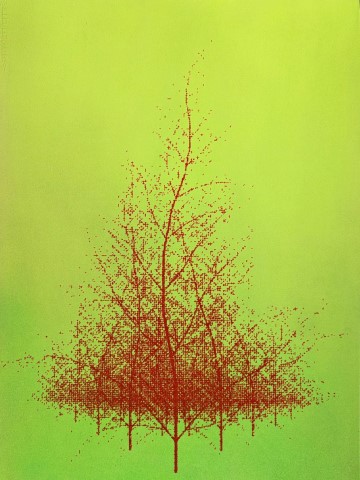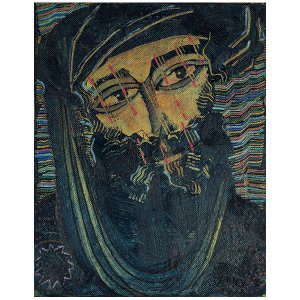Qasim Bugti is a contemporary visual artist, miniature painter, and art educationist. He was born in 1984 in Jafarabad, Balochistan, and currently lives and works in his studio in Karachi, Pakistan. He earned a bachelor’s degree in fine arts with a specialization in miniature painting from the National College of Arts (NCA) in Lahore, Pakistan, in 2009. Throughout his career, Qasim has held nine solo exhibitions and forty-six group shows nationally and internationally. Notably, in 2021, he performed a live portrait of the founder of Pakistan, Quaid-e-Azam. Qasim established his art studio in 2017 and was recognized by Military College Sui Balochistan with best performance certificates in painting and calligraphy in 2018 and 2019. Earlier in his career, in 2011, he was awarded the Haji Shareef Prize in Miniature Painting at NCA. Additionally, Qasim attended the Indus Valley School of Art and Architecture in Karachi in 2005, where he received a certificate in Drawing and Painting.
Qasim’s latest work explores the resilience of trees. They stand strong through adversity, with their branches outstretched like open arms, welcoming us into their embrace. Trees provide comfort, shelter, and joy to all, without discrimination. In literature and mythology, they are often depicted as the abodes of nature spirits. Ancient cultures, such as the Greeks and Persians, used the motif of the world tree, its roots wrapped around the Earth and its branches reaching the heavens, as a symbol of human potential to ascend from the material realm to the spiritual or to access mystical planes of existence. The Tree of Life, in particular, is a recurring theme in art, representing the unity and connection between Heaven and Earth, the past and present, and the cycle of death and rebirth. The cracks and wrinkles in tree bark are my main source of inspiration. Trees, much like humans, bear these physical marks that tell a story. These features reveal a tree’s age and how long it has endured, just as the lines on a human face reflect the wisdom of our elders. By examining the external structure of the tree, he seeks to uncover the deeper essence of its reality.





Reviews
There are no reviews yet.